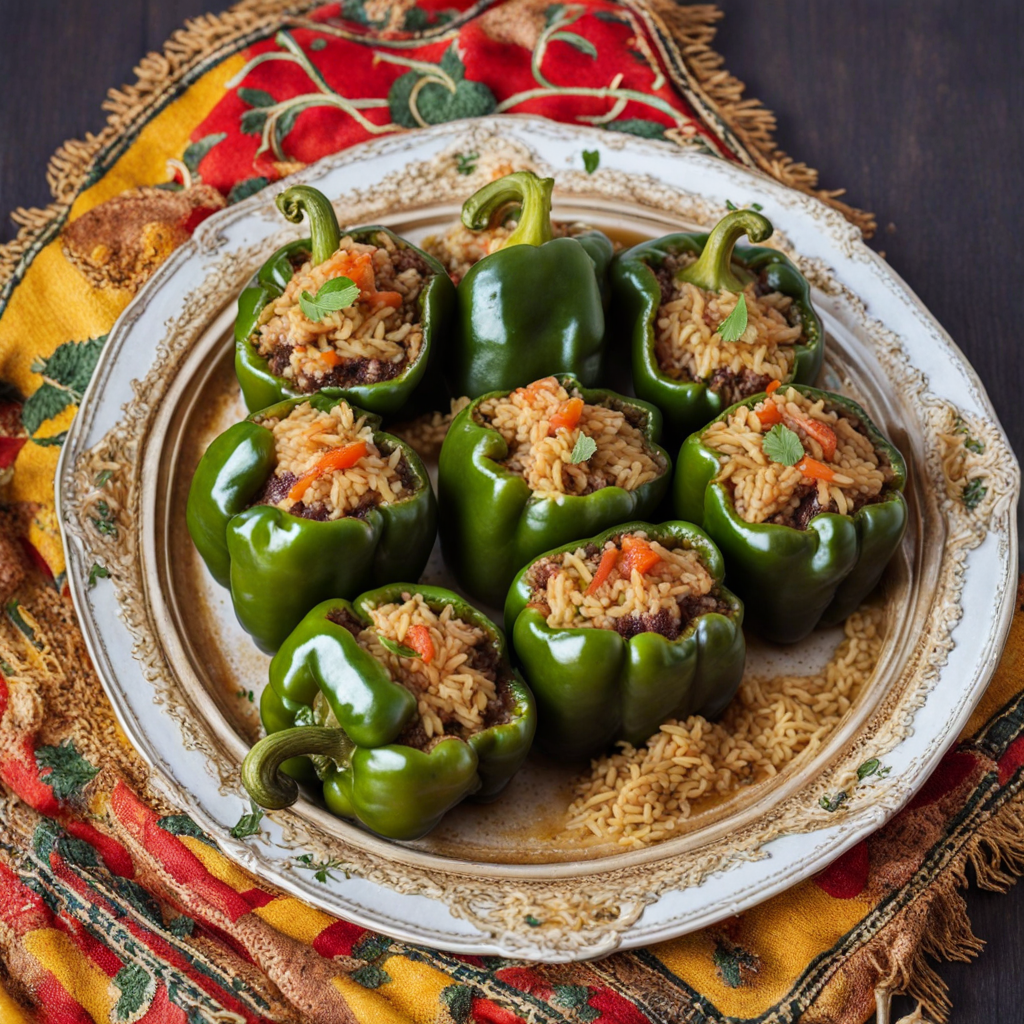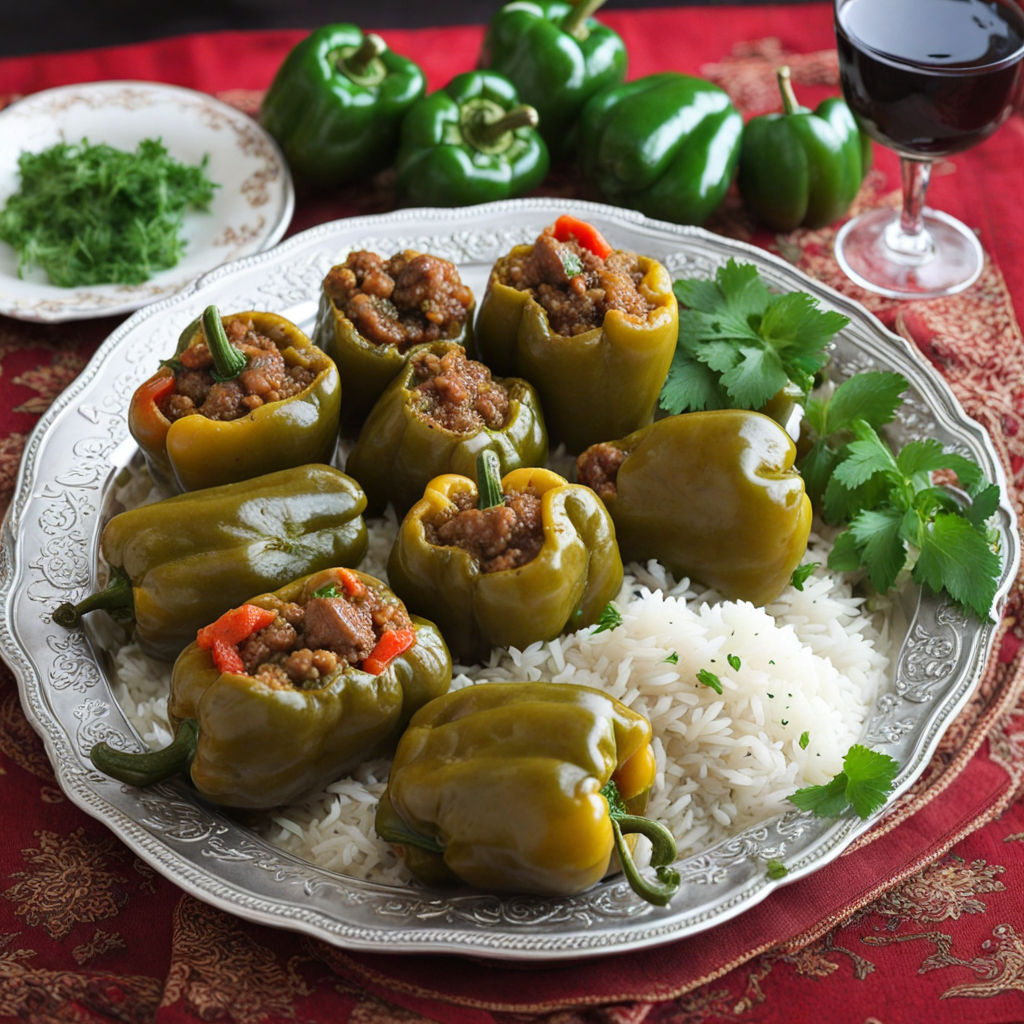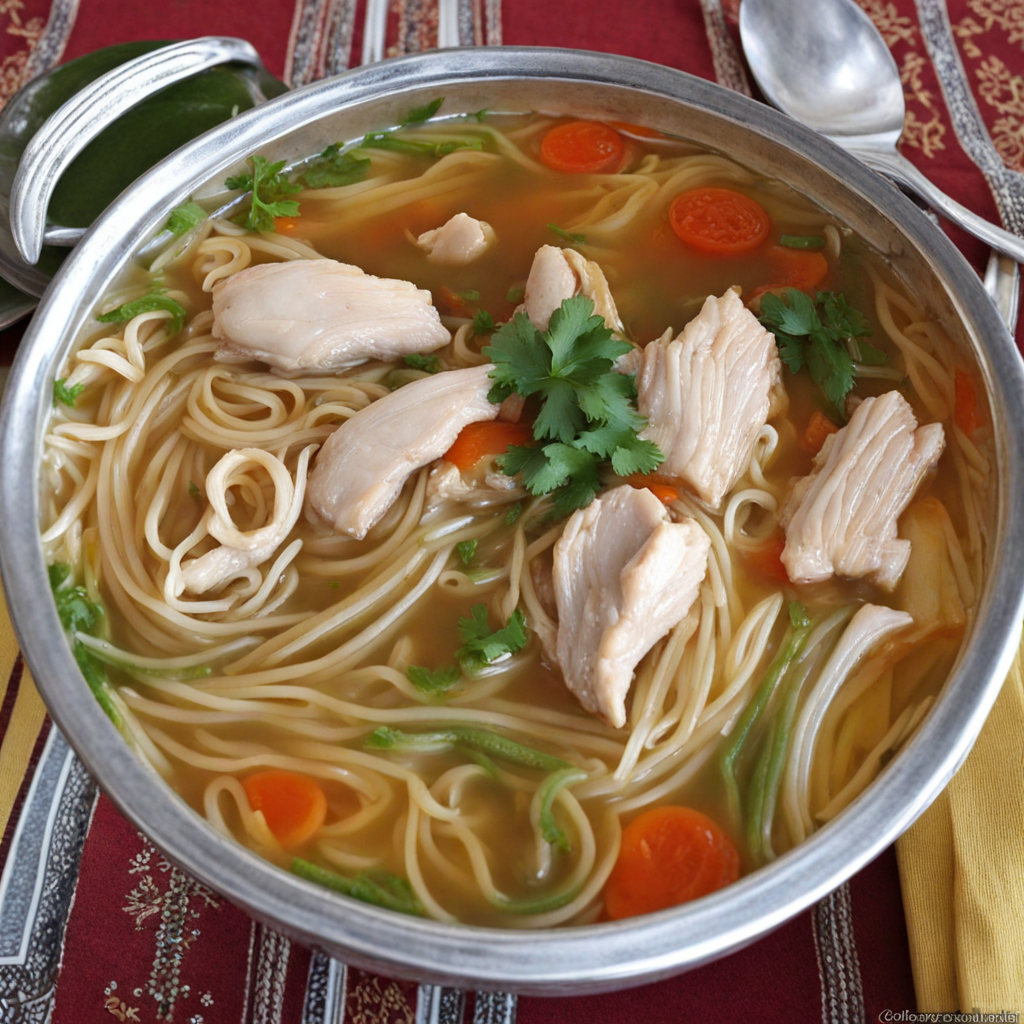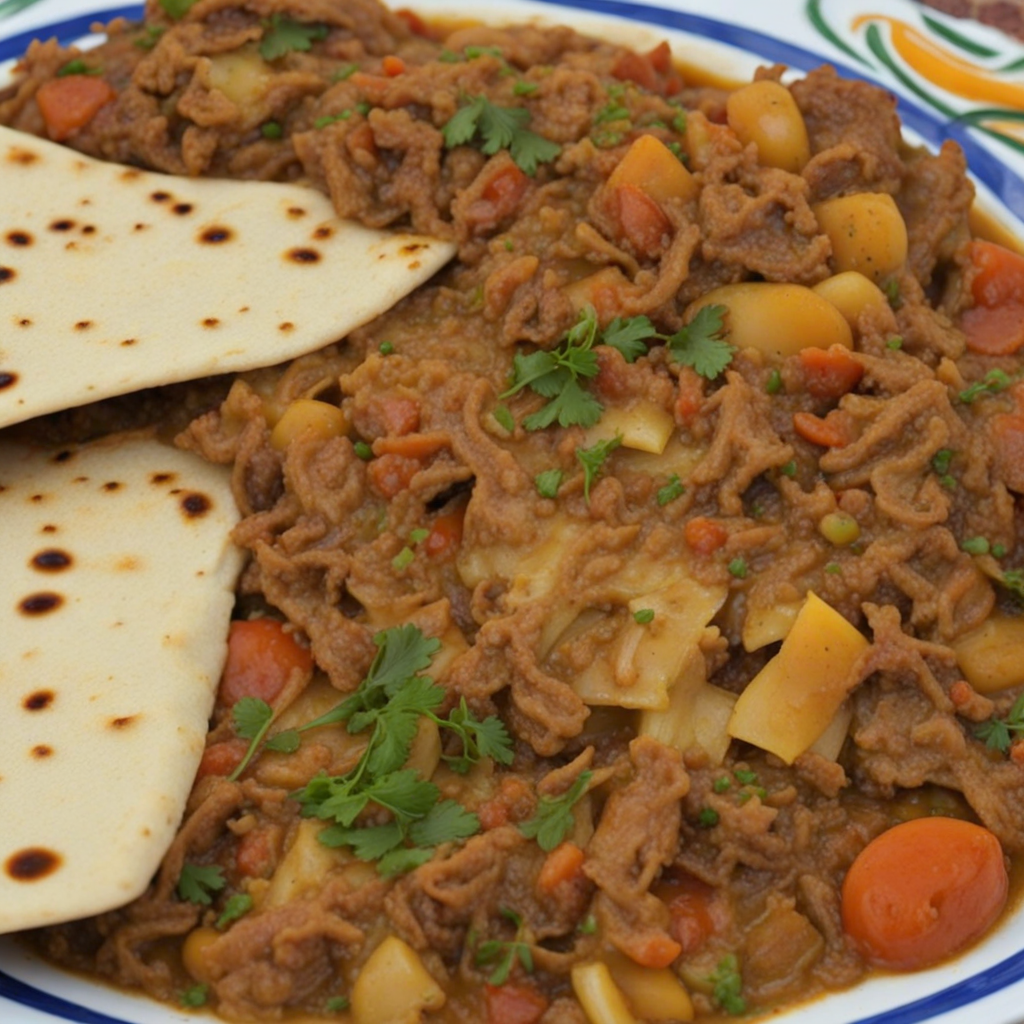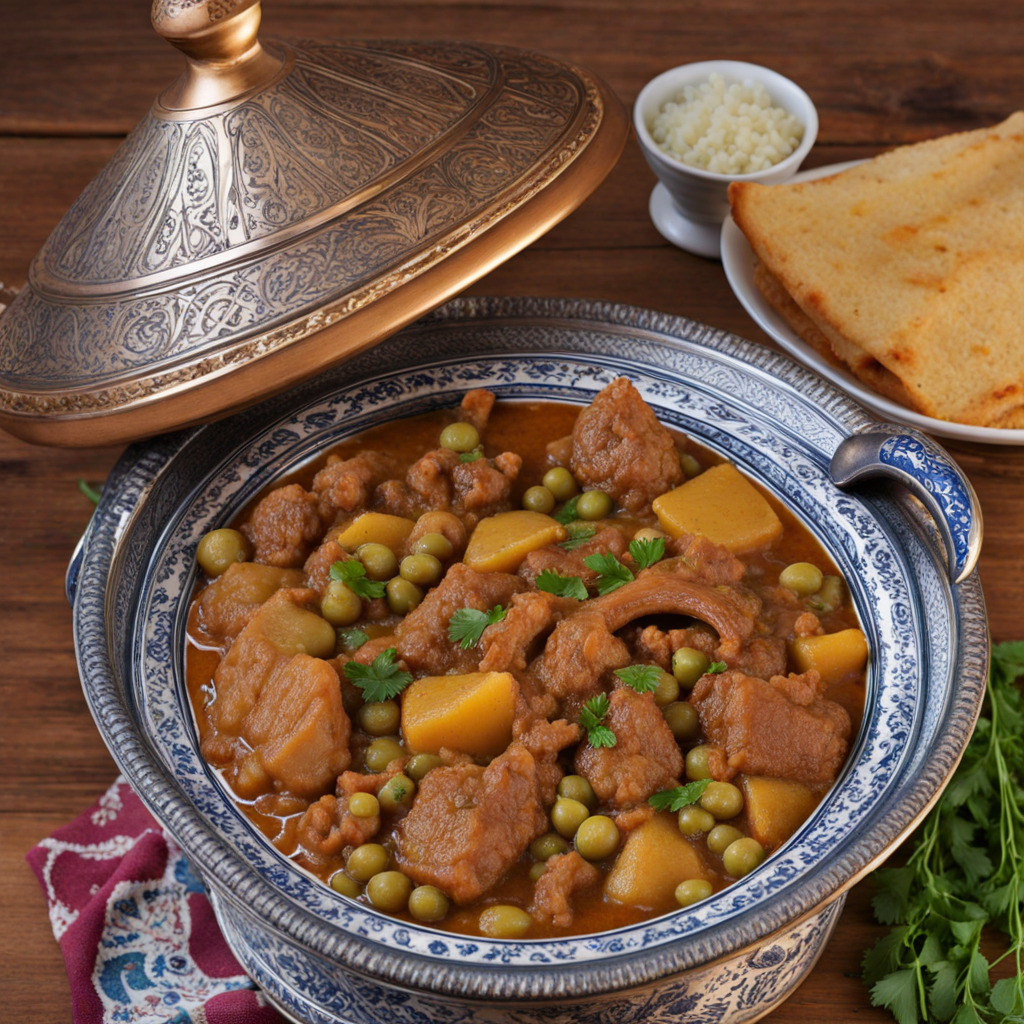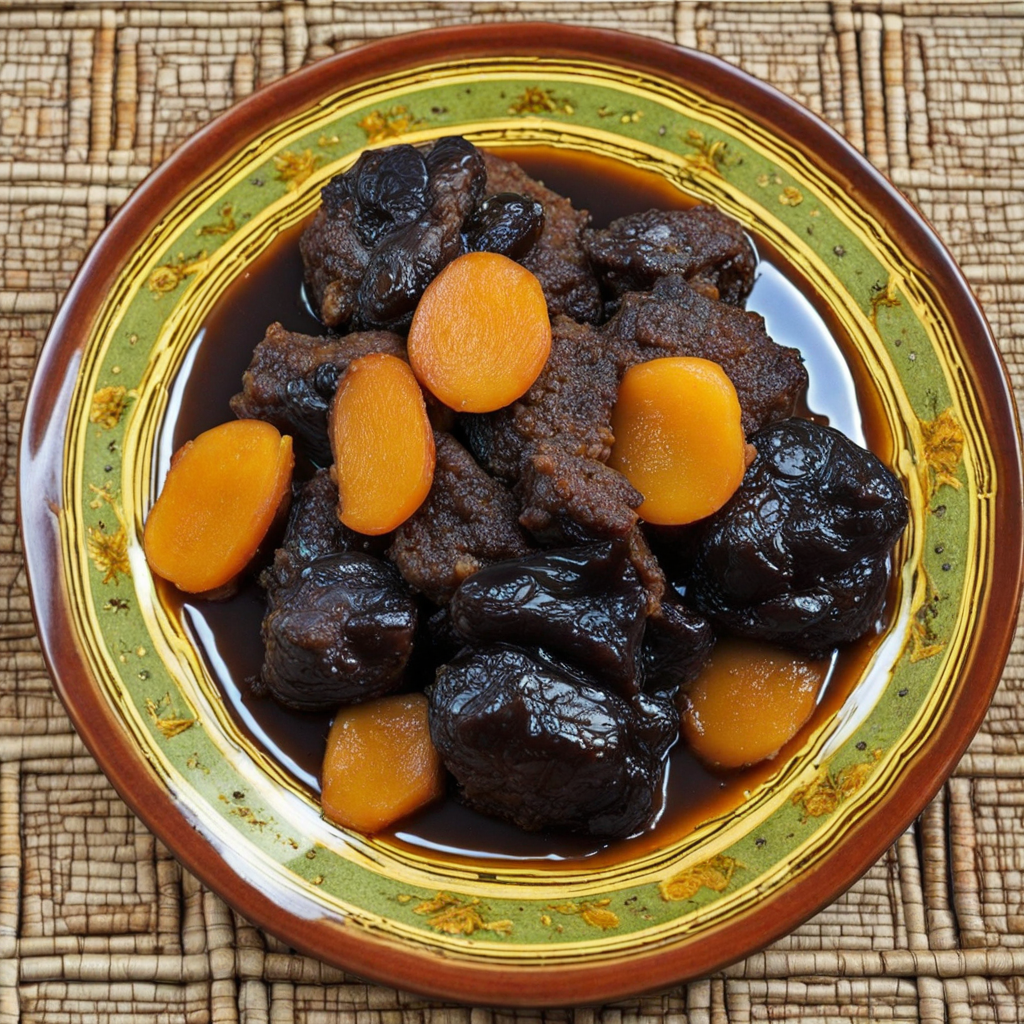Felfel Dolma
Felfel Dolma is a delightful Algerian dish that showcases the vibrant flavors and rich culinary heritage of North Africa. At its core, Felfel Dolma consists of bell peppers, typically green or red, which are hollowed out and stuffed with a savory mixture of spiced rice, minced meat (often lamb or beef), and a medley of aromatic herbs and spices. The stuffing is seasoned with ingredients such as cumin, paprika, and sometimes a hint of cinnamon, creating a warm and inviting flavor profile that tantalizes the palate. The dish is often enhanced with the addition of tomatoes, onions, and garlic, which contribute to its depth and complexity. Once prepared, the stuffed peppers are gently simmered in a rich tomato sauce, allowing the flavors to meld beautifully. This cooking method not only infuses the peppers with the sauce's tangy sweetness but also ensures that they remain tender and juicy. The sauce, often laced with additional spices, complements the stuffing perfectly, making every bite a harmonious blend of textures and tastes. Felfel Dolma is typically served hot, often accompanied by crusty bread or fluffy couscous, allowing diners to savor every last drop of the sauce. What makes Felfel Dolma particularly special is its versatility; it can be adapted to suit various dietary preferences and can be made vegetarian by substituting the meat with lentils or chickpeas. Additionally, the dish is often garnished with fresh herbs like parsley or cilantro, adding a burst of color and freshness. Whether enjoyed as a comforting family meal or a festive dish for special occasions, Felfel Dolma captures the essence of Algerian cuisine, inviting anyone who tries it to embark on a flavorful journey through the heart of the Mediterranean.
How It Became This Dish
The History of فلفل دولمة (Dolma Pepper) in Algeria #### Origins: A Culinary Mosaic The dish known as فلفل دولمة, or Dolma Pepper, has a rich history that reflects the diverse tapestry of Algerian culture and its culinary traditions. The term "dolma" is derived from the Turkish word "dolmak," meaning "to be stuffed." While the concept of stuffing vegetables is widespread across various cultures—from the Middle Eastern to Mediterranean regions—the Algerian interpretation showcases a unique blend of local ingredients and influences. The origins of dolma can be traced back to the Ottoman Empire, which spanned across parts of Europe, Asia, and North Africa. As the empire expanded, it carried with it culinary practices that melded local flavors with imperial recipes. In Algeria, the introduction of stuffed vegetables coincided with the Ottoman presence in the 16th century, which left an indelible mark on the country’s gastronomy. However, the Algerian dolma has evolved distinctly, incorporating indigenous ingredients and spices that reflect the local landscape. #### Cultural Significance Dolma Pepper holds a significant place in Algerian cuisine, not only as a beloved dish but also as a symbol of hospitality and community. Traditionally, it is served during family gatherings, festive occasions, and celebrations, embodying the spirit of sharing and togetherness. The process of making dolma is often communal; family members come together to prepare the dish, making it a ritual that strengthens bonds through cooperation and shared labor. In Algeria, the stuffing typically consists of a mix of minced meat (usually lamb or beef), rice, and an array of herbs and spices such as cumin, coriander, and parsley. The choice of ingredients can vary by region and season, showcasing the adaptability of the dish. Some versions may include chickpeas, nuts, or raisins, reflecting local agricultural practices and the availability of resources. This adaptability is a hallmark of Algerian cooking, where seasonal and regional variations contribute to the rich culinary heritage. #### Development Over Time The evolution of فلفل دولمة is a testament to Algeria's dynamic history. Following the Ottoman period, colonial influences began to shape Algerian cuisine, particularly during French rule from the 19th century until independence in 1962. French culinary techniques and ingredients were introduced, leading to a fusion of flavors that further enriched the dolma experience. For instance, the use of béchamel sauce in some variations can be traced back to French culinary influence, illustrating how global interactions can transform local dishes. In the post-colonial era, there was a resurgence of interest in traditional Algerian dishes, including dolma. The emphasis on celebrating national identity led to a revival of indigenous cooking methods and ingredients. Chefs and home cooks alike sought to reclaim their culinary heritage, often experimenting with recipes that had been passed down through generations while also incorporating contemporary twists. This revival has made فلفل دولمة not just a nostalgic dish but also a canvas for innovation. In recent years, as Algeria continues to navigate globalization, the dish has gained international recognition. Algerian diaspora communities have brought their culinary traditions to new cultures, introducing dolma to an increasingly global audience. Food festivals, cooking classes, and social media have played significant roles in popularizing فلفل دولمة beyond Algeria’s borders, allowing it to be appreciated in various culinary contexts. #### Regional Variations As with many traditional dishes, regional variations of فلفل دولمة exist throughout Algeria. In the coastal regions, where seafood is abundant, some variations involve stuffing peppers with fish or seafood mixtures, showcasing the influence of the Mediterranean Sea on local cuisine. In contrast, the mountainous regions may lean towards heartier fillings, utilizing local game meats or wild herbs. Moreover, the choice of peppers used for dolma can vary significantly. While bell peppers are the most common, some regions may use eggplants, zucchinis, or even tomatoes as vessels for stuffing. Each vegetable offers unique textures and flavors, further emphasizing the adaptability of the dish. The use of these vegetables not only reflects the agricultural practices of the area but also speaks to the creativity of Algerian cooks who embrace the seasonality of ingredients. #### Contemporary Context In contemporary Algeria, فلفل دولمة continues to be a staple in both homes and restaurants. It is often featured in culinary competitions and food festivals that celebrate Algerian heritage. Chefs are increasingly experimenting with contemporary presentations and flavors while respecting traditional methods and ingredients, creating a dialogue between the past and the present. The rise of social media has allowed for the sharing of recipes, techniques, and personal stories surrounding dolma. Home cooks and professional chefs alike post pictures and videos of their culinary creations, igniting a renewed interest in this traditional dish. Online platforms foster a sense of community among food enthusiasts, allowing people from different backgrounds to share their variations and experiences with فلفل دولمة. Furthermore, as the global food landscape evolves, there is an increasing emphasis on sustainability and local sourcing. Many chefs are now focusing on using organic ingredients and minimizing waste, aligning with a broader movement towards healthier and more environmentally conscious eating. This shift resonates deeply with the values of traditional Algerian cooking, which has always emphasized the use of fresh, locally available ingredients. #### Conclusion The history of فلفل دولمة in Algeria is a captivating narrative of cultural exchange, adaptation, and resilience. From its Ottoman roots to its modern-day manifestations, this dish encapsulates the spirit of Algerian hospitality and the importance of community in culinary practices. As it continues to evolve and gain recognition on the global stage, فلفل دولمة serves as a delicious reminder of Algeria's rich culinary heritage—a heritage that is ever-changing yet deeply rooted in tradition. Through every stuffed pepper, generations of flavors, stories, and memories are preserved, ensuring that this beloved dish remains a cornerstone of Algerian identity for years to come.
You may like
Discover local flavors from Algeria


